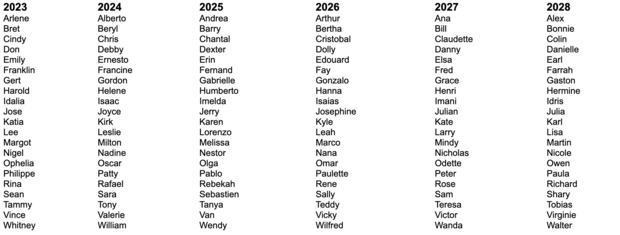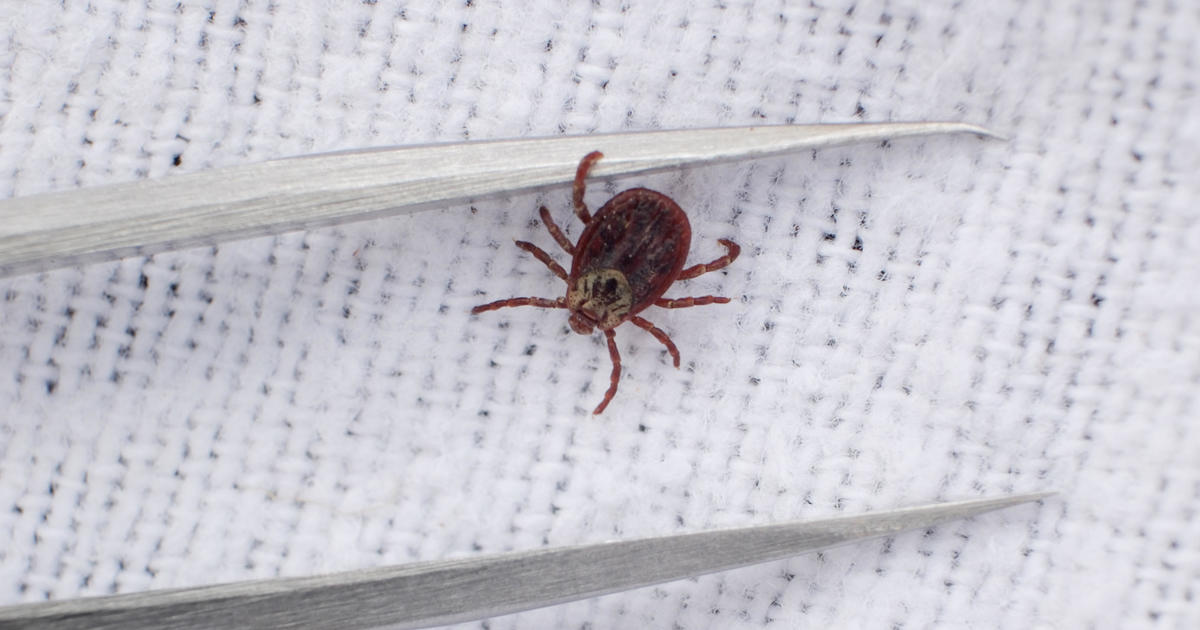How do hurricanes get their names? A look at the naming process and 2023's full list of storms
The first day of the Atlantic hurricane season was June 1, and the first hurricane of 2023 was named Arlene. All of the hurricanes that form this year will have a predetermined name.
How are names chosen?
The names given to hurricanes are pretty much already set. There are six alphabetical lists of names for Atlantic hurricanes, maintained by the World Meteorological Organization, and they are rotated through every six years. Therefore, the 2023 list that starts with Arlene and ends with Whitney will be used again in 2029.
A developing cyclone is given a name when it officially becomes a tropical storm, meaning it has sustained winds of at least 39 mph. Once maximum sustained winds reach 74 mph, the tropical storm becomes a hurricane.
Storm names used to be chosen more randomly, not assigned in a pre-planned manner. For example, a storm that hit a boat named Antje and ruined its mast was called "Antje's hurricane," according to the WMO. For hundreds of years, storms were named after saint days. Storms were also sometimes known by the name of a place they hit, like the Great Galveston Hurricane of 1900.
Why do hurricanes have names?
Using names helps meteorologists — and the public — keep track of storms. Meteorologists started following an alphabetical system, with an "A" name being given to the first hurricane of the season, a "B" name to the second, and so on.
The National Hurricane Center originated the name lists in 1953. Only women's names were used until 1979, when the lists began alternating women's and men's names. The six current lists have been in rotation since 1979, with some names occasionally being retired and replaced.
Pacific hurricane names follow the same system, but have their own designated lists.
Why are hurricane names retired?
The name lists can be altered if a storm is particularly deadly.
The decision to remove names is determined at a committee meeting, according to the National Hurricane Center. To avoid being inappropriate and to maintain sensitivity after a particularly bad storm, the name will be replaced.
However, some names have been removed without this reasoning. In 1966, the name Fern was changed to Frieda without reason, according to the center.
Sometimes multiple names a year are retired, if it is a particularly bad hurricane season.
What names are retired?
The center has a list of hurricane names that have been retired over the years. Notable ones include: Katrina, the deadly storm that hit New Orleans in 2005, which was replaced with Katia, and Floyd, which hit in 1999, and was replaced with Franklin.
In 2017, Harvey, Irma, Maria and Nate were all bad enough to be replaced. In 2021, Ida was the only name replaced. When that list is used again in 2027, the name Imani will be used in Ida's place.
Earlier this year, the name Ian was replaced with Idris, and Fiona with Farrah, after the deadly storms wreaked havoc in 2022.
According to World Meteorological Organization, 94 names have been retired since 1953.
What names are being used in 2023?
Here is the list of names for the 2023 hurricane season:
Arlene Lee
Bret Margot
Cindy Nigel
Don Ophelia
Emily Philippe
Franklin Rina
Gert Sean
Harold Tammy
Idalia Vince
Jose Whitney
Katia
What names will be used next year?
There are six annual rotating lists of names that get used, as seen below:
What happens if the alphabetic names run out?
There aren't 26 names on the list — the letters Q, U, X, Y and Z are left out. When the list of names run out, the World Meteorological Organization begins to defer to a supplemental list. This has only happened twice in the past 15 years — most recently in 2020, when the primary list of names was used up by mid-September.
They used to use the Greek alphabet when they ran out of names, but decided at a committee meeting in 2021 that practice would end. The reason: there is often too much focus on the Greek names — which can be hard to pronounce for some — and not on the actual impact of the storm. Plus, the committee decided to retire Eta and Iota, leaving holes in the Greek alphabet system.
They now have an extra list of names to use when needed, starting with Adria and ending with Will.





